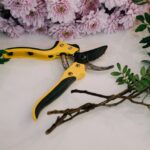The use of moss poles is an excellent method for instructing your plants to grow vertically rather than horizontally or downwards. We’ll look at how to utilize a moss pole for your houseplants in this plant care article. Before we get there, let’s have a look at the plants that will thrive against a moss pole.
In this article, we’ll cover a few topics that are associated with moss poles, including the following:
- Why would you want to use a moss pole?
- Which plants benefit from the use of a moss pole?
- What is the best way to utilize a moss pole?
Let’s get started and learn why you should use a moss pole for your house plants.
Table of Contents
Why should you use a moss pole to support your houseplants?
If you want to guide the growth of your plants in a certain direction, you should make use of a moss pole. Most plant owners like to use moss poles to encourage their plants to grow upwards. You can grow your plants up rather than down or out for a multitude of reasons:
- You have more options in terms of planting location.
- Your plant requires less room, which means there is room for additional plants!
- Plant “shaping”
- You enjoy how it looks on your plant.
Using a moss pole allows you to better “shape” your plant. For example, when growing a Monstera, you may guide the growth of your houseplant. If you do not utilize a moss pole, your plant will develop in whichever manner it sees fit on its own. There’s nothing wrong with it, but it does limit the number of places you may put your houseplant.
A moss pole is an excellent tool to have at your disposal if you would like to exercise somewhat more authority over the form that your plant takes.
Which plants benefit from the use of a moss pole?
It’s a good idea to determine if your plant will benefit from a moss pole before we go into how to utilize one. Hanging plants with vines or climbing plants are the best plants to utilize a moss pole with.
When it comes to taking care of plants, it may seem like the most logical decision to just let them develop in their natural way. However, it’s possible that your houseplant needs your assistance more than you realize.
Your trailing or climbing house plant most likely originates from rainforests or other tropical environments in its natural habitat. It does so against the trunks of trees and other immovable objects like rocks. Your houseplant depends on these sturdy structures to provide it with an easy to develop environment that is also stable.
You will encourage the growth of your plants by providing them with a sturdy structure to grow against. Your houseplant will feel at ease and more natural when it is allowed to flourish in this consistent environment.
Climbing plants, such as Monstera, or hanging plants, such as Pothos or Philodendron, are your best bets for using a moss pole with your plant arrangement.
What is the best way to utilize a moss pole?
Now comes the fun part: we’ll look at how you can use a moss pole to assist your plant grow. The manner in which you assist your plant is somewhat dependent on the plant itself.
If you have a Philodendron with thin vines, you’ll need a means to carefully maintain the vines on the moss pole. If, on the other hand, you have a Monstera that has thick stems, all you’ll need to do is make sure those stems are kept as near to the moss pole as they can be.
The following is a list of the things that you will need in order to grow your plant using a moss pole:
- A moss pole
- A climbing plant
- strips of Velcro or plastic gardening tubes.
You can get your houseplant off to a good start with the help of a moss pole if you have these things.
The purpose of utilizing a moss pole in conjunction with your houseplant is to ensure that the plant makes contact with the moss pole. The velcro strips are a terrific method to “tie” your plant to the moss pole in any way you choose.
When placing a plant with delicate vines, such as a Philodendron, against a moss pole, you need to use extreme caution in order to avoid damaging the plant. Since the vines are easy to break, don’t tie them too tightly to the moss pole.
As your plant continues to expand, you will need to tie it to the moss pole in order to support its further growth. You continue to guide the plant along the moss pole for as long as you see fit. Your houseplant will eventually learn to grow against the moss pole on its own, especially if it has air roots.
Both the Philodendron and the Pothos will begin to grow “roots,” which they will afterwards employ to secure themselves to various supports, such as the moss pole. These plants will rapidly be able to figure out where and how to develop, so you won’t have to direct their growth for an especially long time.
Because the Monstera grows more slowly than other plants, you will need to direct it to grow upwards for a little longer period of time. You won’t have to put as much effort into it after the Monstera starts growing around the moss pole since you won’t need to prune it as often.
Conclusion
A moss pole is an excellent choice if you want to shape your plant to fit the aesthetic of your living area and give it the appearance that you want for it. All climbing plants can benefit from the use of moss poles, which make it easy to show your plants where and how to grow.
When you have a climbing plant, such as a Monstera, Philodendron, or Pothos, all you need to do is acquire a moss pole and figure out a method to attach it to your plant.
After you’ve used a moss pole for the first time, you’ll realize that, despite its initial scary appearance, it’s actually rather pleasant and simple to operate. When you assist your plant in the beginning, it will rapidly learn how to do the task on its own without further assistance.
I appreciate you taking the time to read my article. I really hope that this information is of use to you in maintaining the health and beauty of your plants.
Photo by Severin Candrian on Unsplash



